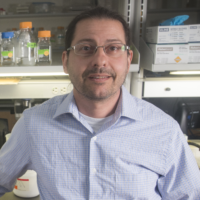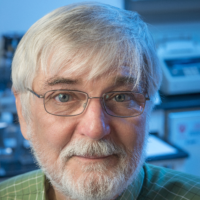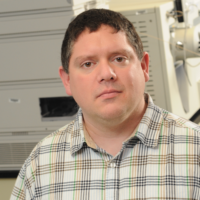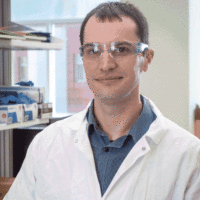Leah Adams
Assistant Professor, Department of Psychology
Ethan Ahn
Associate Professor, Department of Electrical and Computer Engineering
Farhang Alem
Associate Director, Regional Biocontainment Laboratory
Farrokh Alemi
Department of Health Administration and Policy
Suman Alishetty
Research Assistant Professor, Department of Bioengineering
Jatin Ambegaonkar
Professor of Kinesiology and Associate Dean for Research, CEHD Administration
Priyanka Anand
Associate Professor, Department of Health Administration and Policy
Taylor Anderson
Assistant Professor, Department of Geography and Geoinformation Science
Scott Anthony
Research Faculty, Institute for Biohealth Innovation
Harbir Antil
Professor, Department of Mathematical Sciences
Giorgio Ascoli
Professor, Department of Bioengineering
Sanja Avramovic
Assistant Professor, Department of Health Administration and Policy
Shaghayegh Bagheri
Assistant Professor, Department of Mechanical Engineering
Ancha Baranova
Professor, School of Systems Biology
Ernest Barreto
Chair and Professor, Department of Physics and Astronomy
Raedeh Basiri
Assistant Professor, Department of Nutrition and Food Studies
Kathleen Beigh
Assistant Professor, School of Nursing
Tyrus Berry
Associate Professor, Department of Mathematical Sciences
Amy Best
Chair, Department of Sociology and Anthropology
Martin Binks
Chair and Professor, Department of Nutrition and Food Studies
Barney Bishop
Associate Professor, Department of Chemistry and Biochemistry
Michael Bloom
Professor, Department of Global and Community Health
Laurence Bray
Senior Associate Provost for Graduate Education, Graduate Division
Jennifer Brielmaier
Associate Professor, Department of Psychology
Xiaomei Cai
Associate Professor, Department of Communication
John Cantiello
Professor, Department of Health Administration and Policy
Benjamin Cash
Research Professor, Department of Atmospheric, Oceanic & Earth Sciences
Amanda Caswell
Director, Athletic Training Education Program
Shane Caswell
Director, S.M.A.R.T. Lab
Lauren Cattaneo
Associate Professor, Department of Psychology
Juan Cebral
Professor, Department of Bioengineering
Vikas Chandhoke
Professor, School of Systems Biology
Tara Chaplin
Associate Professor, Department of Psychology
Vanessa Chee
Associate Professor, Department of Global and Community Health
Li-Mei Chen
Assistant Professor, Department of Social Work
Lawrence Cheskin
Professor, Department of Nutrition and Food Studies
Helen Chin
Assistant Professor, Department of Global and Community Health
Parag Chitnis
Associate Professor, Department of Bioengineering
Christopher Clarke
Associate Professor, Department of Communication
Carol Cleaveland
Associate Professor, Department of Social Work
Robin Couch
Associate Professor, Department of Chemistry and Biochemistry
John Cressman
Associate Professor, Department of Physics and Astronomy
Alison Cuellar
Professor, Department of Health Administration and Policy
Timothy Curby
Professor, Department of Psychology
Holger Dannenberg
Assistant Professor, Department of Bioengineering
Niyati Dhokai
Research Associate Professor, College of Visual and Performing Arts
Ozlem Dilek
Assistant Professor, Department of Chemistry and Biochemistry
Sabine Doebel
Assistant Professor, Department of Psychology
Pei Dong
Assistant Professor, Department of Mechanical Engineering
Carolyn Drews-Botsch
Professor, Department of Global and Community Health
Megan DuBois
Assistant Professor, Department of Global and Community Health
Theodore Dumas
Associate Professor, Department of Psychology
Zoran Duric
Associate Professor, Department of Computer Science
Brian Eckenrode
Associate Professor, Forensic Science
Erin Eife
Assistant Professor, Department of Criminology, Law and Society
K. Pierre Eklou
Assistant Professor, School of Nursing
Hadi El-Amine
Associate Professor, Department of Systems Engineering and Operations Research
Maria Emelianenko
Chair and Professor, Department of Mathematical Sciences
Elisabeth Epstein
Assistant Professor, Department of Biology
Virginia Espina
Research Professor, Center for Applied Proteomics and Molecular Medicine
Christianne Esposito-Smythers
Professor, Department of Psychology
Lila Fleming
Associate Professor, Department of Global and Community Health
Jane Flinn
Associate Professor, Department of Psychology
Iulia Fratila
Assistant Professor, Department of Global and Community Health
Brett Froelich
Assistant Professor, Department of Biology
Karl Fryxell
Associate Professor, School of Systems Biology
Marcie Fyock
Associate Professor, Athletic Training Education Program
Catherine Gallagher
Associate Professor, Department of Criminology, Law and Society
Isaac Gang
Associate Professor, College of Engineering and Computing
Renee Geschke
Associate Professor, Department of Health Administration and Policy
Charlotte Gill
Associate Professor, Department of Criminology, Law and Society
Patrick Gillevet
Professor, Department of Biology
Gilbert Gimm
Associate Professor, Department of Health Administration and Policy
Michael Girgis
Assistant Professor, Department of Bioengineering
Debora Goetz Goldberg
Associate Professor, Department of Health Administration and Policy
Thalia Goldstein
Associate Professor, Department of Psychology
Karen Trister Grace
Assistant Professor, School of Nursing
Geraldine Grant
Chair, Department of Biology
Kenneth Griffin
Professor, Department of Global and Community Health
Jacqueline Guevara
Assistant Professor, Department of Social Work
Jhumka Gupta
Associate Professor, Department of Global and Community Health
Abdul Hafeez
Assistant Professor, Department of Health Administration and Policy
Ramin Hakami
Associate Professor, School of Systems Biology
Michelle Hand
Assistant Professor, Department of Social Work
Daniel Hanley
Assistant Professor, Department of Biology
William Helton
Professor, Department of Psychology
Lucas Henneman
Assistant Professor, Department of Civil, Environmental, and Infrastructure Engineering
Renady Hightower
Associate Professor, Department of Health Administration and Policy
Denise Hines
Associate Professor, Department of Social Work
Caroline Hoemann
Professor, Department of Bioengineering
Y. Alicia Hong
Professor, Department of Health Administration and Policy
Kathi Huddleston
Research Associate Professor, School of Nursing
Emily Ihara
Chair and Professor, Department of Social Work
Megumi Inoue
Associate Professor, Department of Social Work
Allison Jack
Assistant Professor, Department of Psychology
M. Saleet Jafri
Professor, School of Systems Biology
Hao Jing
Assistant Professor, Department of Chemistry and Biochemistry
Margaret Jones
Professor, College of Education and Human Development
Lilian de Jonge
Professor, Department of Nutrition and Food Studies
Linn Jorgenson
Associate Professor, College of Education and Human Development
Jeah Jung
Professor, Department of Health Administration and Policy
Nadine Kabbani
Associate Professor, School of Systems Biology
Pilgyu Kang
Assistant Professor, Department of Mechanical Engineering
Seth Kaplan
Professor, Department of Psychology
Fatah Kashanchi
Professor, School of Systems Biology
Todd Kashdan
Professor, Department of Psychology
William Kennedy
Associate Professor, Department of Computational and Data Sciences
Sojung (Claire) Kim
Associate Professor, Department of Communication
Daphne King
Assistant Professor, Department of Social Work
Jason Kinser
Acting Associate Dean for Academic Affairs, College of Science
Jesse Kirkpatrick
Research Associate Professor, Department of Philosophy
Vicki Kirsch
Associate Professor, Department of Social Work
Haagen Klaus
Professor, Department of Sociology and Anthropology
Dmitri Klimov
Professor, School of Systems Biology
Hansoo Ko
Assistant Professor, Department of Health Administration and Policy
Gregory Koblentz
Associate Professor, Schar School of Policy and Government
Malda Kocache
Professor, Department of Biology
Naoru Koizumi
Associate Dean of Research and Grants, Schar School of Policy and Government
Olga Kornienko
Associate Professor, Department of Psychology
Jana Košecká
Professor, Department of Computer Science
John Kotcher
Research Associate Professor, Center for Climate Change Communication
Yanika Kowitlawakul
Associate Professor, School of Nursing
Jenna Krall
Associate Professor, Department of Global and Community Health
Gary Kreps
Distinguished University Professor, Department of Communication
Frank Krueger
Professor, School of Systems Biology
Martha (Marti) Kubik
Professor, School of Nursing
Maurice Kugler
Professor, Schar School of Policy and Government
Lauren Kuykendall
Associate Professor, Department of Psychology
Suyoung Kwon
Assistant Professor, School of Nursing
Candace Lacayo
Associate Professor, Athletic Training Education Program
Kerri LaCharite
Associate Professor, Department of Nutrition and Food Studies
Andrea Landis
Associate Professor, School of Nursing
Heidi Lawrence
Associate Professor, Department of English
Yi-Ching Lee
Associate Professor, Department of Psychology
Timothy Leslie
Associate Professor, Department of Geography and Geoinformation Science
Bethany Letiecq
Professor, College of Education and Human Development
Betsy Levine-Brown
Associate Professor, College of Education and Human Development
Fei Li
Associate Professor, Department of Computer Science
Robert Lichter
Professor, Department of Communication
Rupali Limaye
Associate Professor, Department of Global and Community Health
Jessica Lin
Associate Professor, Department of Computer Science
Lance Liotta
Co-Director, Center for Applied Proteomics and Molecular Medicine
Christopher Lockhart
Research Assistant Professor, School of Systems Biology
Evan Lowder
Associate Professor, Department of Criminology, Law and Society
Alessandra Luchini
Professor, Center for Applied Proteomics and Molecular Medicine
Rayanne Luke
Assistant Professor, Department of Mathematical Sciences
Cynthia Lum
Distinguished University Professor, Department of Criminology, Law and Society
Kevin Lybarger
Assistant Professor, Department of Information Sciences and Technology
Charles Madden
Professor, Department of Biology
PJ Maddox
Chair and Professor, Department of Health Administration and Policy
Edward Maibach
Distinguished University Professor, Department of Communication
Emanuela Marasco
Assistant Professor, Department of Information Sciences and Technology
Joel Martin
Associate Professor, School of Kinesiology
Alexandra Masterson
Associate Professor, Department of Biology
Holly Matto
Professor, Department of Social Work
Erin Maughan
Associate Professor, School of Nursing
Keiana Mayfield
Assistant Professor, Department of Social Work
Leigh McCue
Chair and Professor, Department of Mechanical Engineering
Craig McDonald
Associate Professor, Department of Psychology
Patrick McKnight
Associate Professor, Department of Psychology
Connie McNeely
Professor, Schar School of Policy and Government
Robyn Mehlenbeck
Director, Center for Community Mental Health
Nirup Menon
Professor, Information Systems and Operations Management
James Metcalf
Professor, Department of Global and Community Health
Rochelle Mhonde
Assistant Professor, Department of Global and Community Health
Elise Miller-Hooks
Chair and Professor, Department of Civil, Environmental, and Infrastructure Engineering
Hua Min
Associate Professor, Department of Health Administration and Policy
Allison Miner
Assistant Professor, Department of Nutrition and Food Studies
Marybeth Mitcham
Assistant Professor, Department of Global and Community Health
Jeffrey Moran
Assistant Professor, Department of Mechanical Engineering
Vivian Motti
Associate Professor, Department of Information Sciences and Technology
Rima Nakkash
Professor, Department of Global and Community Health
Aarthi Narayanan
Professor, Department of Biology
Jill Nelson
Associate Professor, Department of Electrical and Computer Engineering
Anne Nicotera
Professor, Department of Communication
Julia Nord
Professor, Department of Atmospheric, Oceanic & Earth Sciences
Cameron Nowzari
Associate Professor, Department of Electrical and Computer Engineering
Kristen O’Brien
Associate Professor, College of Education and Human Development
Cheryl Oetjen
Distinguished University Professor, School of Nursing
Kyeung Mi Oh
Associate Professor, School of Nursing
James Olds
Distinguished University Professsor, Schar School of Policy and Government
Valerie Olmo
Associate Professor, Department of Biology
Sonia Ben Ouagrham-Gormley
Associate Professor, Schar School of Policy and Government
Mikell Paige
Chair and Professor, Department of Chemistry and Biochemistry
Anna Parisi
Assistant Professor, Department of Social Work
Maryam Parsa
Assistant Professor, Department of Electrical and Computer Engineering
Nathalia Peixoto
Associate Professor, Department of Electrical and Computer Engineering
Melissa Perry
Dean and Professor, College of Public Health
Erin Peters-Burton
Professor, College of Education and Human Development
Matthew Peterson
Associate Professor, Department of Psychology
Emanuel Petricoin
Co-Director, Center for Applied Proteomics and Molecular Medicine
Mariaelena Pierobon
Associate Professor, School of Systems Biology
Anna Pollack
Professor, Department of Global and Community Health
Laura Poms
Professor, Department of Global and Community Health
Ketul Popat
Chair and Professor, Department of Bioengineering
Lucas Prieto
Assistant Professor, Department of Social Work
Hemant Purohit
Associate Professor, Department of Information Sciences and Technology
Wanli Qiao
Associate Professor, Department of Statistics
Tiphanie Raffegeau
Assistant Professor, School of Kinesiology
Huzefa Rangwala
Professor, Department of Computer Science
Allison Redlich
Distinguished University Professor, Department of Criminology, Law and Society
Hang Ren
Associate Professor, Information Systems and Operations Management
Keith Renshaw
Professor, Department of Psychology
Jennifer Rickerby
Assistant Professor, School of Nursing
Cortney Hughes Rinker
Professor, Department of Sociology and Anthropology
Charles Robison
Associate Professor, School of Kinesiology
Margaret Rodan
Professor, School of Nursing
Amira Roess
Professor, Department of Global and Community Health
Elsa Ronzier
Research Faculty, Institute for Biohealth Innovation
William Rosenberger
Distinguished University Professor, Department of Statistics
Shani Ross
Associate Professor, Department of Bioengineering
Deborah Rupp
Professor, Department of Psychology
Paul Russo
Research Assistant Professor, Center for Applied Proteomics and Molecular Medicine
Abdulaziz Sachedina
IIIT Chair and Professor, Department of Religious Studies
Quentin Sanders
Assistant Professor, Department of Bioengineering
Karen Sauer
Professor, Department of Physics and Astronomy
Timothy Sauer
Professor, Department of Mathematical Sciences
Katherine Scafide
Associate Professor, School of Nursing
Anne Scherer
Associate Professor, Department of Biology
Bernard Schmidt
Assistant Director, MS Data Analytics Engineering
Joel Schnur
Research Professor, College of Science
Padmanabhan Seshaiyer
Professor, Department of Mathematical Sciences
Donald Seto
Professor, School of Systems Biology
Tyler Shaw
Associate Professor, Department of Psychology
Amarda Shehu
Inaugural VP and Chief AI Officer
Brenda Sheingold
Associate Professor, Department of Health Administration and Policy
Jerome Short
Associate Professor, Department of Psychology
Masoumeh Sikaroodi
Technical Director, MicroBiome Analysis Center
Siddhartha Sikdar
Professor, Department of Bioengineering
Rick Smith
Assistant Professor, Department of Sociology and Anthropology
Paul So
Professor, Department of Physics and Astronomy
Lee Solomon
Assistant Professor, Department of Chemistry and Biochemistry
Bonnie Stabile
Associate Professor, Schar School of Policy and Government
Amanda Haymond Still
Research Assistant Professor, School of Systems Biology
Debra Stroiney
Associate Professor, School of Kinesiology
Jeffrey Stuewig
Associate Professor, Department of Psychology
Jiayang Sun
Chair and Professor, Department of Statistics
Caroline Sutter
Co-Director, Mason Center for Health Workforce
Rebecca Sutter
Director, Mason and Partners (MAP) Clinics
Jinshan Tang
Professor, Department of Health Administration and Policy
June Tangney
Distinguished University Professor, Department of Psychology
Faye Taxman
Director, Center for Advancing Correctional Excellence!
Daniel Temple
Chair and Professor, Department of Sociology and Anthropology
James Thompson
Professor, Department of Psychology
Evelyn Tomaszewski
Assistant Professor, Department of Social Work
Catherine Tompkins
Professor, Department of Social Work
Brenda Tondi
Professor, Department of Biology
Daniel Tong
Associate Professor, Department of Atmospheric, Oceanic & Earth Sciences
Natasha Tonge
Assistant Professor, Department of Psychology
Rodman Turpin
Assistant Professor, Department of Global and Community Health
Aman Ullah
Assistant Professor, School of Systems Biology
Özlem Uzuner
Chair and Professor, Department of Information Sciences and Technology
Iosif Vaisman
Director, School of Systems Biology
Monique van Hoek
Professor, School of Systems Biology
Remi Veneziano
Associate Professor, Department of Bioengineering
Anne Verhoeven
Professor, Department of Biology
Anand Vidyashankar
Professor, Department of Statistics
Melissa Villodas
Assistant Professor, Department of Social Work
Patrick Vora
Associate Professor, Department of Physics and Astronomy
Eric Waithaka
Assistant Professor, Department of Social Work
Dongqing Wang
Assistant Professor, Department of Global and Community Health
Lily Wang
Professor, Department of Statistics
Qi Wei
Associate Professor, Department of Bioengineering
Robert Weiler
Professor, College of Public Health
Ali Weinstein
Professor, Department of Global and Community Health
David Weisburd
Distinguished University Professor, Department of Criminology, Law and Society
Martin Wiener
Associate Professor, Department of Psychology
Duminda Wijesekera
Professor, Department of Cyber Security Engineering and Department of Computer Science
Michelle Williams
Associate Professor, Department of Global and Community Health
David Wilson
Distinguished University Professor, Department of Criminology, Law and Society
Adam Winsler
Professor, Department of Psychology
Patrice Winter
Assistant Professor, Department of Global and Community Health
James Witte
Professor, Department of Sociology and Anthropology
Janusz Wojtusiak
Professor, Department of Health Administration and Policy
Kevin Wright
Professor, Department of Communication
Yuntao Wu
Professor, School of Systems Biology
Julie Wulfkuhle
Research Professor, Center for Applied Proteomics and Molecular Medicine
Jie Xu
Professor, Department of Systems Engineering and Operations Research
Hong Xue
Associate Professor, Department of Health Administration and Policy
Sue-Ming Yang
Associate Professor, Department of Criminology, Law and Society
Chaowei (Phil) Yang
Professor, Department of Geography and Geoinformation Science
Ningshi Yao
Assistant Professor, Department of Electrical and Computer Engineering
Stephen Zaccaro
Professor, Department of Psychology
Xiaoquan Zhao
Professor, Department of Communication
Weidong Zhou
Research Associate Professor, Center for Applied Proteomics and Molecular Medicine




































































































































































































































































